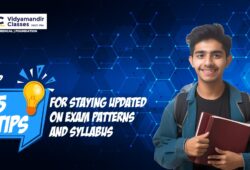Revolutionizing Education: Unleashing the Potential of AI for Personalized Learning!
 Posted On
Posted On
315 total views, 1 views today
The concept of personalized learning in education is not a novel idea, but it has experienced a resurgence in recent years due to the rapid advancement of cutting-edge educational technology. Today, educators and parents are harnessing the power of technology to cater to the unique learning needs of each student, acknowledging the inherent diversity in their ability to grasp concepts effectively.
In this era of technological progress, personalized learning has taken on a new dimension. Unlike traditional classrooms burdened by unequal student-to-teacher ratios, the integration of technology and electronic devices has paved the way for more balanced interactions. One-on-one learning interactions are now feasible and cost-effective, with the potential to replace traditional models. However, while technology excels in providing quick answers, it falls short in breaking down the step-by-step process leading to those answers, hindering students’ deep understanding. This underscores the irreplaceable role of human educators in guiding students through the learning process facilitated by technology.

A Holistic Approach to Personalized Learning
Personalized learning, powered by technology, transcends the notion of students merely plugging into devices and following predefined activities. It gives students the power to direct their own educational paths. Effective implementation of personalized learning practices requires more than just adopting adaptive software; it involves nurturing students’ creative and critical thinking skills.
Enter the Next Generation of AI Technology
The recent months have witnessed the emergence of a new generation of high-end technologies, including Open AI’s ChatGPT-4. These advanced language models employ neural networks trained on massive datasets to generate human-like text. By comprehending context and discerning patterns in inputs, these AI bots craft coherent responses to queries. Although these responses may exhibit limitations, they offer a glimpse into the future role of AI assistants in relieving educators from mundane tasks, allowing them to focus on meaningful interactions with students. This development has the potential to usher in an era of individualized learning, democratizing access to education and empowering students to reach their full potential.
Envisioning the Role of AI Tools in Education
Enhanced Capabilities: AI tools have demonstrated remarkable performance across various subjects and levels, from high school to professional exams. Their rapid improvement is evident in instances such as GPT-4’s impressive progression from a failing grade on a bar exam to scoring nearly 90%. These tools consistently excel in assessments like the SAT, LSAT, and advanced placement exams.
Advanced Reasoning: AI models like GPT-4, Google’s Bard, and Microsoft’s Bing Chat are evolving into sophisticated reasoning engines capable of contextualizing, inferring, and deducing information akin to human thinking. These tools serve as expert research assistants, conducting literature reviews, analyzing data, synthesizing findings, and generating tailored educational content.
Natural Language Interface: One remarkable feature of these intelligent tools is their proficiency in understanding and responding to natural language commands, eliminating the need for intricate menus or complex formulas. They simplify complex concepts through relatable examples and images while offering alternative explanations.
Personalized Tutoring: AI’s capacity to comprehend and generate human-like text facilitates personalized tutoring experiences. These tools provide explanations, guidance, and real-time feedback tailored to each learner’s preferences and specific needs.
Empowering Educators: Educators often dedicate substantial time to administrative tasks, leaving limited room for actual teaching. AI tools with reasoning capabilities can automate tasks like lesson planning, resource searching, translation for non-native English speakers, and crafting engaging quizzes, optimizing teachers’ time.
Assisting Students: AI-based feedback mechanisms offer constructive critiques on student writing, aiding in enhancing writing skills and project quality. Additionally, these tools provide instant assistance when students encounter obstacles.
Leveraging AI’s Potential While Acknowledging Its Limitations
It is essential to recognize that these smart technologies have their limitations. Despite their prowess, they sometimes struggle with calculations and may present inaccurate information. Rather than replacing teachers’ expertise, AI-powered tools should complement educators, enhancing the overall learning experience for both teachers and students. By harnessing AI’s potential, we can envision a future where education becomes more effective, equitable, and tailored, allowing students to unlock their full potential while enabling teachers to focus on meaningful connections and impactful teaching.
Final Thoughts
The convergence of personalized learning and advanced AI technology marks a significant paradigm shift in education. The synergy between technology and pedagogy has the potential to revolutionize traditional learning models, paving the way for tailored, engaging, and equitable education experiences. While AI tools exhibit remarkable capabilities, they should be embraced as supportive aids rather than replacements for human educators. This symbiotic relationship between AI and educators will undoubtedly reshape the educational landscape, fostering a future where both teachers and students thrive in an environment of enhanced learning and meaningful connections.




